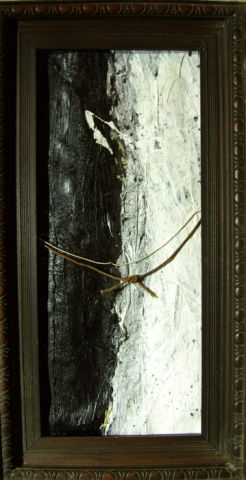Part 1
I wonder sometimes if I will ever be able to learn enough (I already know the answer to that is, no).
I just finished reading an essay by Rosalind Krauss called Line as Language. It was first published as catalogue text for the exhibition ‘Line as Language: Six Artists Draw’ at Princeton University Art Museum, February 23 – March 31, 1974. This essay is part of Krauss’ anthology, Perpetual Inventory. It is an important essay for me because it discusses many of the issues I grapple with in my own work, the self, context, space and the interaction of these things on each other.
Being 1974, Krauss is discussing post painterly abstraction – Jasper Johns and Frank Stella, minimalism – Donald Judd, Robert Morris, conceptualism – Sol Lewitt, Mel Bochner and other artists involved in these movements. Her discussion revolves around the changing view of the self. In the forties and fifties abstract expressionism worked from the view of the self as interior; a private space known only to the individual and therefore any communication from this space must move outward as an act of expression. The artists who came after the abstract expressionists (we call them postmodern now) conceived of the self in direct opposition to this former view. The self was not a private interior space but a public space where stimulus and information remained visible. These artists saw meaning not as originating from the private self but passing into the self, annulling any idea of autonomy.
Philosophically, according to Krauss, this concept of the self, as not being formed before receiving outside stimulus, started with Wittgenstein in his Blue Book when he asks what it means to know a tune. In literature of the late 50’s, Samuel Beckett and others, in the nouveau roman, were already working with this concept of the self. This of course, led to the ‘death of the author’ concept by Barthes. It seems to me, even though the ‘death of the author’ has been invalidated, this question of ‘what comes first, the self or the stimulus’ has moved to materiality, in terms of concept, ownership and communication, and we’ve seen the de-materialization of medium. Krauss speaking of LeWitt’s wall drawings says, ‘…the wall drawings testify to the possibility of executing any system of combination the artist can think of. One might say that they stand for the predicates of any proposition, which once made (or imagined) must be able to achieve itself physically. This attacks the notion of privacy by eating away at an idea of imagination as a special mental precinct that is truly unavailable to other minds…The significance of the wall as a medium for line or drawing is, then, that it becomes the ground of a refusal to separate idea form existence.’



